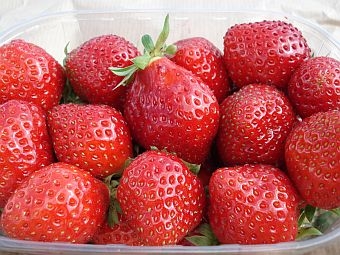 I’m Charlie Nardozzi and this is the Vermont Garden Journal. The English poet William Butler said, "Doubtless God could have made a better berry, but doubtless God never did." What fruit was he referring to? It’s the strawberry.
I’m Charlie Nardozzi and this is the Vermont Garden Journal. The English poet William Butler said, "Doubtless God could have made a better berry, but doubtless God never did." What fruit was he referring to? It’s the strawberry.
This native American fruit was collected from wild plants until the 18th century when Europeans fell in love with strawberries and started breeding varieties with larger fruits. Madame Tallien, a prominent figure in Napoleon’s court, was famous for bathing in the juice of 22 pounds of fresh strawberries. Colonial Americans had already fallen in love with this fruit. The native Americans would grind them up with meal and make a bread, the precursor to the strawberry shortcake.
While we’re most familiar with the June bearing strawberry fruit, two other types of strawberries are probably better for home gardeners. Everbearing or day neutral strawberries produce fruit throughout the summer. ‘Evie II’ and ‘Seascape’ are two newer versions of these berries to try. They don’t send out as many runners as June bearing plants, so they’re perfect for smaller spaced gardens. Alpine strawberries harkened back to the original wild strawberry. These small plants don’t spread by runners and produce sweet tasting white, yellow or red colored fruits all summer. ‘Alexandria’ and ‘Yellow Wonder ‘are good varieties to try.
Plant strawberry plants now in raised beds amended with compost. Space everbearing and alpine plants 1 foot apart in double rows spaced 8 inches apart. Pick off the flowers until the beginning of July to allow the plants to get established. Keep well watered, weeded, and fed with a balanced organic fertilizer. These strawberries also grow well planted in barrels, baskets or even self watering window boxes. Consider mixing them in containers with other flowers and small-size edibles such as parsley.
Now for this week’s tip, cover cold sensitive vegetables such as basil and peppers with a floating row cover these first few weeks in June to keep the soil and air temperatures warm and allow the plants to get established.
Next week on the Vermont Garden Journal, I’ll be talking about slugs. For now, I’ll be seeing you in the garden!
Resources:
Growing Strawberries
Alpine Strawberries